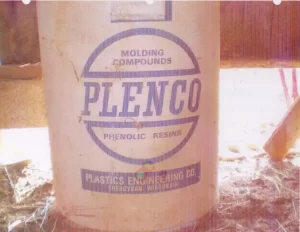Asbestos in Plastics: Unraveling Health Risks in Molding Processes for Workers
 Molders encountered asbestos in the mixing, processing, and sanding of molds and mold injection. The intersection of asbestos and molding presented health risks for molders. Asbestos fibers offered additional benefits to plastics, making them resistant to moisture, heat, acid, and electricity. Asbestos continued to be a default choice in plastics for various applications, including high-temperature and electrical uses.
Molders encountered asbestos in the mixing, processing, and sanding of molds and mold injection. The intersection of asbestos and molding presented health risks for molders. Asbestos fibers offered additional benefits to plastics, making them resistant to moisture, heat, acid, and electricity. Asbestos continued to be a default choice in plastics for various applications, including high-temperature and electrical uses.
Asbestos-molded plastic products had applications in electrical components, consumer goods, textiles, automobile parts, aircraft, weapon systems, and construction materials.
Workers inhaled asbestos dust when opening bags of plastic molding compound, and the molding process itself generated additional dust. Finishing processes, such as tumbling and hand-filing, further exposed workers to asbestos dust. This occupational exposure to asbestos in molded plastic compounds has been linked to serious health issues, including mesothelioma and lung cancer.
Products used by plastics workers that may contain asbestos include but are not limited to:
- Electrical switches
- Circuit breakers
- Arc chutes
- Brake pad linings
- Distributor caps
- Coils
- Aircraft weapons systems
- Missile casings
- Epoxy
- Resin
- Hardeners
- Pastes
- Sealers
- Panels
- Compounds
- Boards
- Cement
- Sheets
- Molding compounds
- Molding boards
- Coatings
- Lacquers
- Adhesive putties
- Cloth
- Liquids
- Fillers
- Glues
Industries We Represent
Endorsed by Plumbers Local 98


